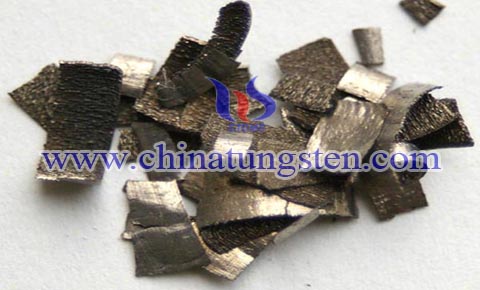Geologies, Tight Financing Markets Set Apart Global Rare-earths Projects
- Details
- Category: Rare Earth News
- Published on Friday, 08 March 2013 11:15
There is a growing realisation within the rare-earths extraction sector that those development projects that do not have well understood geologies would find it increasingly difficult to attract financing, which may result in those projects falling by the wayside in the medium-term.
The chairperson of South Africa-focused project developer Frontier Rare Earths, which is developing its flagship Zandkopsdrift project in the Northern Cape, Phillip Kenny, told Mining Weekly Online during the Prospectors and Developers Association of Canada’s recent show, which 30 147 investors, analysts, mining executives, geologists and government officials attended, that if a prospective rare earths company had not already identified one of the three well understood rare-earths ores, chances were slim to attract capital.
Kenny explained rare earths are most economically extracted with proven processes from the minerals bastnaesite, monazite and xenotime. Any other of the more than 200 minerals known to contain essential or significant rare earth elements (REE) would require extensive research and development to find an economically sensible process with which to extract REEs, which would take a lot of time and cost excessive amounts of money.
Financiers were increasingly asking for process flow sheets before they would consider borrowing developers a dime.
“The race is on to become the next rare-earths producer, and we are ahead, owing to being the only rare-earths junior which already has a significant strategic off-take partner. We are also well funded and the Zandkopsdrift project’s mainly monazite resource would enable us to produce rare earths at very economical cost,” Kenny aid.

Finance in place
He was referring to a deal closed in December with Korean Government-owned mining and natural resource investment company Korea Resources Corporation (Kores), which had acquired a 10% interest in Frontier's Zandkopsdrift rare-earths project, along with an offtake right and obligation for 10% of the production.
The company said it believed the C$23.8-million deal made it the only junior company in the rare-earths sector to have signed and completed a definitive agreement with a significant strategic partner.
Under the terms of the agreement, Kores has the option to increase its participation in Zandkopsdrift up to 50%, together with an offtake right and obligation for up to half of the production from the project.
Further, Kores had agreed to arrange project finance to develop the entire project on the best-available market terms and to provide pro rata funding for the portion of Zandkopsdrift development costs not covered by the project finance, while it would also be responsible for providing technical and operating experience for the design, construction and operation of the Zandkopsdrift facilities.
Frontier added that it was willing to cooperate with Kores with regard to downstream opportunities in the area of rare-earth metals, alloys and magnets.
Frontier said its cash balance was boosted by the transaction to C$52-million and was expected to be sufficient to fund the completion of a preliminary feasibility study (PFS) and a definitive feasibility study at Zandkopsdrift, work on the company's other proposed exploration and development programs and corporate overheads.
Kores was also required to pay Frontier 10% of all operating costs and expenses related to Zandkopsdrift from July onwards, amounting to about C$400 000 as at the end November.
Potent resource
In April 2012 Frontier started work on a Canadian National Instrument 43-101-compliant PFS on Zandkopsdrift. Kenny said most of the requisite ancillary studies were now either completed or were at an advanced stage.
“The group of REE-development companies have indeed already become smaller, as pressure on rare-earths prices have made many projects uneconomical,” he said.
However, he believed prices have bottomed out and with growing demand from producers of smartphons, electric vehicles and magnets, REE prices were expected to climb.
Kenny pointed out the Zandkopsdrift project would be an integrated operation, meaning it would export the separated REEs to Korea.
The highest-value heavy rare-earth oxides, namely europium, terbium and dysprosium, are contained at elevated levels at Zandkopsdrift, compared with several other deposits being evaluated in Australia and North America.
The levels of thorium – 178 parts per million (ppm) – and uranium (47 ppm) in the Zandkopsdrift deposit are low, and compare favourably with many of the more advanced rare earths projects worldwide. This also reduces the potential environmental implications that may arise, should mine development be undertaken at Zandkopsdrift.
There are about 22.92-million tons containing 532 000 t of total rare-earth oxide (TREO) at an average grade of 2.32% at Zandkopsdrift in the indicated resource category, with an additional 20.81-million tons containing 415 000 t of TREO in the inferred resource category, with a 1% TREO cutoff grade.
It is also important to note that there are a series of higher-grade zones within the overall resource estimate at Zandkopsdrift, which are considered to be sufficient in size for exploitation as discrete units within the deposit.
The 2.5% cutoff zone is a discrete area referred to as the Zandkopsdrift B zone, which contains about 450 000 t of rare-earth oxide and is expected to be the initial focus of the company’s activities.
Rival company Great Western Minerals Group is developing the Steenkampskraal REE project, also located within the Northern Cape province.
Rare Earth Manufacturer & Supplier: Chinatungsten Online - http://www.chinatungsten.com
Tel.: 86 592 5129696; Fax: 86 592 5129797
Email: sales@chinatungsten.com
Tungsten News & Tungsten Prices, 3G Version: http://3g.chinatungsten.com
Tungsten News & Tungsten Prices, WML Version: http://m.chinatungsten.com



 sales@chinatungsten.com
sales@chinatungsten.com